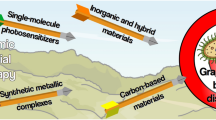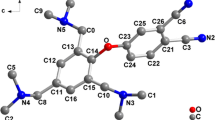Abstract
The persistent problem of antibiotic resistance has created a strong demand for new methods for therapy and disinfection. Photodynamic inactivation (PDI) of microbes has demonstrated promising results for eradication of antibiotic-resistant strains. PDI is based on the use of a photosensitive compound (photosensitizer, PS), which upon illumination with visible light generates reactive species capable of damaging and killing microorganisms. Since photogenerated reactive species are short lived, damage is limited to close proximity of the PS. It is reasonable to expect that the larger the number of damaged targets is and the greater their variety is, the higher the efficiency of PDI is and the lower the chances for development of resistance are. Exact molecular mechanisms and specific targets whose damage is essential for microbial inactivation have not been unequivocally established. Two main cellular components, DNA and plasma membrane, are regarded as the most important PDI targets. Using Zn porphyrin-based PSs and Escherichia coli as a model Gram-negative microorganism, we demonstrate that efficient photoinactivation of bacteria can be achieved without detectable DNA modification. Among the cellular components which are modified early during illumination and constitute key PDI targets are cytosolic enzymes, membrane-bound protein complexes, and the plasma membrane. As a result, membrane barrier function is lost, and energy and reducing equivalent production is disrupted, which in turn compromises cell defense mechanisms, thus augmenting the photoinduced oxidative injury. In conclusion, high PDI antimicrobial effectiveness does not necessarily require impairment of a specific critical cellular component and can be achieved by inducing damage to multiple cellular targets.







Similar content being viewed by others
References
Almeida J, Tome JPC, Neves MGPMS, Tome AC, Cavaleiro JAS, Cunha A, Costa L, Faustino MAF, Almeida A (2014) Photodynamic inactivation of multidrug-resistant bacteria in hospital wastewaters: influence of residual antibiotics. Photochem Photobiol Sci 13(4):626–633. doi:10.1039/C3pp50195g
Al-Mutairi DA, Craik JD, Batinic-Haberle I, Benov LT (2007a) Inactivation of metabolic enzymes by photo-treatment with zinc meta N-methylpyridylporphyrin. Biochim Biophys Acta 1770(11):1520–1527
Al-Mutairi DA, Craik JD, Batinic-Haberle I, Benov LT (2007b) Induction of oxidative cell damage by photo-treatment with zinc N-methylpyridylporphyrin. Free Radic Res 41(1):89–96
Alves E, Faustino MAF, Tomé JPC, Neves MGPMS, Tomé AC, Cavaleiro JAS, Cunha A, Gomes NCM, Almeida A (2013) Nucleic acid changes during photodynamic inactivation of bacteria by cationic porphyrins. Bioorg Med Chem 21(14):4311–4318. doi:10.1016/j.bmc.2013.04.065
Alves E, Faustino MAF, Neves MGPMS, Cunha A, Tome J, Almeida A (2014a) An insight on bacterial cellular targets of photodynamic inactivation. Future Med Chem 6(2):141–164. doi:10.4155/fmc.13.211
Alves E, Faustino MAF, Neves MGPMS, Cunha T, Nadais H, Almeida A (2014b) Potential applications of porphyrins in photodynamic inactivation beyond the medical scope. J Photochem Photobiol C: Photochem Rev 22:34–57. doi:10.1016/j.jphotochemrev.2014.09.003
Ballatore MB, Durantini J, Gsponer NS, Suarez MB, Gervaldo M, Otero L, Spesia MB, Milanesio ME, Durantini EN (2015) Photodynamic inactivation of bacteria using novel electrogenerated porphyrin-fullerene C60 polymeric films. Environ Sci Technol 49(12):7456–7463. doi:10.1021/acs.est.5b01407
Benov L (2015) Photodynamic therapy: current status and future directions. Med Princ Pract 24:14–28
Benov L, Batinic-Haberle I, Spasojevic I, Fridovich I (2002) Isomeric N-alkylpyridylporphyrins and their Zn(II) complexes: inactive as SOD mimics but powerful photosensitizers. Arch Biochem Biophys 402(2):159–165
Benov L, Craik J, Batinic-Haberle I (2012) Protein damage by photo-activated Zn(II) N-alkylpyridylporphyrins. Amino Acids 42(1):117–128
Berridge MV, Tan AS (1993) Characterization of the cellular reduction of 3-(4,5-dimethylthiazol-2-yl)-2,5-diphenyltetrazolium bromide (MTT): subcellular localization, substrate dependence, and involvement of mitochondrial electron transport in MTT reduction. Arch Biochem Biophys 303(2):474–482
Berridge MV, Herst PM, Tan AS (2005) Tetrazolium dyes as tools in cell biology: new insights into their cellular reduction. Biotechnol Annu Rev 11:127–152
Bertoloni G, Lauro FM, Cortella G, Merchat M (2000) Photosensitizing activity of hematoporphyrin on Staphylococcus aureus cells. Biochim Biophys Acta Gen Subj 1475(2):169–174. doi:10.1016/S0304-4165(00)00071-4
Cadet J, Douki T, Ravanat JL (2006) One-electron oxidation of DNA and inflammation processes. Nat Chem Biol 2(7):348–349
Cadet J, Douki T, Ravanat JL (2010) Oxidatively generated base damage to cellular DNA. Free Radic Biol Med 49(1):9–21
Cadet J, Ravanat JL, TavernaPorro M, Menoni H, Angelov D (2012) Oxidatively generated complex DNA damage: tandem and clustered lesions. Cancer Lett 327(1–2):5–15. doi:10.1016/j.canlet.2012.04.005
Craig RA, McCoy CP, Gorman SP, Jones DS (2015) Photosensitisers-the progression from photodynamic therapy to anti-infective surfaces. Expert Opin Drug Deliv 12(1):85–101. doi:10.1517/17425247.2015.962512
Dagher SM, Deal WC Jr (1982) [54] Glyceraldehyde-3-phosphate dehydrogenase from pig liver. Methods Enzymol 89(p):310–316
Demidova TN, Hamblin MR (2005) Effect of cell-photo sensitizer binding and cell density on microbial photoinactivation. Antimicrob Agents Chemother 49(6):2329–2335. doi:10.1128/Aac.49.6.2329-2335.2005
Denis TGS, Dai TH, Izikson L, Astrakas C, Anderson RR, Hamblin MR, Tegos GP (2011) All you need is light antimicrobial photoinactivation as an evolving and emerging discovery strategy against infectious disease. Virulence 2(6):509–520. doi:10.4161/viru.2.6.17889
Dosselli R, Millioni R, Puricelli L, Tessari P, Arrigoni G, Franchin C, Segalla A, Teardo E, Reddi E (2012) Molecular targets of antimicrobial photodynamic therapy identified by a proteomic approach. J Proteome 77:329–343. doi:10.1016/j.jprot.2012.09.007
Epe B (1991) Genotoxicity of singlet oxygen. Chem Biol Interact 80(3):239–260
Epe B (2012) DNA damage spectra induced by photosensitization. Photochem Photobiol Sci 11(1):98–106. doi:10.1039/C1pp05190c
Ezzeddine R, Al-Banaw A, Tovmasyan A, Craik JD, Batinic-Haberle I, Benov LT (2013) Effect of molecular characteristics on cellular uptake, subcellular localization, and phototoxicity of Zn(II) N-alkylpyridylporphyrins. J Biol Chem 288(51):36579–36588. doi:10.1074/jbc.M113.511642
Fatania H, Al-Nassar KE, Sidhan V (1993) Purification and partial characterisation of NADP+-linked isocitrate dehydrogenase from rat liver cytosol. FEBS Lett 320(1):57–60. doi:10.1016/0014-5793(93)81657-L
Hamblin MR, Hasan T (2004) Photodynamic therapy: a new antimicrobial approach to infectious disease? Photochem Photobiol Sci 3(5):436–450
Hass BS, Webb RB (1981) Photodynamic effects of dyes on bacteria. IV. Lethal effects of acridine orange and 460- or 500-nm monochromatic light in strain of Escherichia coli that differ in repair capability. Mutat Res Fundam Mol Mech Mutagen 81(3):277–285. doi:10.1016/0027-5107(81)90116-0
Hogan D, Kolter R (2002) Why are bacteria refractory to antimicrobials? Curr Opin Microbiol 5(5):472–477. doi:10.1016/S1369-5274(02)00357-0
Jori G, Brown SB (2004) Photosensitized inactivation of microorganisms. Photochem Photobiol Sci 3(5):403–405. doi:10.1039/b311904c
Jori G, Fabris C, Soncin M, Ferro S, Coppellotti O, Dei D, Fantetti L, Chiti G, Roncucci G (2006) Photodynamic therapy in the treatment of microbial infections: basic principles and perspective applications. Lasers Surg Med 38(5):468–481
Jori G, Magaraggia M, Fabris C, Soncin M, Camerin M, Tallandini L, Coppellotti O, Guidolin L (2011) Photodynamic inactivation of microbial pathogens: disinfection of water and prevention of water-borne diseases. J Environ Pathol Toxicol 30(3):261–271
Kos I, Benov L, Spasojević I, Rebouças JS, Batinić-Haberle I (2009) High lipophilicity of meta Mn(III) N-alkylpyridylporphyrin-based superoxide dismutase mimics compensates for their lower antioxidant potency and makes them as effective as ortho analogues in protecting superoxide dismutase-deficient Escherichia coli. J Med Chem 52(23):7868–7872
Lee CY (1982) [43] Glucose-6-phosphate dehydrogenase from mouse. Methods Enzymol 89(p):252–257
Leung E, Weil DE, Raviglione M, Nakatani H (2011) The WHO policy package to combat antimicrobial resistance. Bull World Health Organ 89(5):390–392. doi:10.2471/BLT.11.088435
Levy SB, Marshall B (2004) Antibacterial resistance worldwide: causes, challenges and responses. Nat Med
Liu Y, Imlay JA (2013) Cell death from antibiotics without the involvement of reactive oxygen species. Science 339(6124):1210–1213. doi:10.1126/science.1232751
Lowry OH, Rosebrough NJ, Farr AL, Randall RJ (1951) Protein measurement with the Folin phenol reagent. J Biol Chem 193(1):265–275
Maisch T (2015) Photodynamic inactivation of multi-resistant bacteria. Photonics Lasers Med 4(4):332–334
Menezes S, Capella MAM, Caldas LR (1990) Photodynamic action of methylene blue: repair and mutation in Escherichia coli. J Photochem Photobiol B Biol 5(3–4):505–517. doi:10.1016/1011-1344(90)85062-2
Nitzan Y, Ashkenazi H (2001) Photoinactivation of Acinetobacter baumannii and Escherichia coli B by a cationic hydrophilic porphyrin at various light wavelengths. Curr Microbiol 42(6):408–414. doi:10.1007/s002840010238
Ogilby PR (2010) Singlet oxygen: there is indeed something new under the sun. Chem Soc Rev 39(8):3181–3209
Preuß A, Zeugner L, Hackbarth S, Faustino MAF, Neves MGPMS, Cavaleiro JAS, Roeder B (2012) Photoinactivation of Escherichia coli (SURE2) without intracellular uptake of the photosensitizer. J Appl Microbiol
Ragas X, He X, Agut M, Roxo-Rosa M, Gonsalves AR, Serra AC, Nonell S (2013) Singlet oxygen in antimicrobial photodynamic therapy: photosensitizer-dependent production and decay in E. coli. Molecules 18(3):2712–2725. doi:10.3390/molecules18032712
Redmond RW, Kochevar IE (2006) Spatially resolved cellular responses to singlet oxygen. Photochem Photobiol 82(5):1178–1186
Sharma SK, Dai T, Kharkwal GB, Huang YY, Huang L, de Arce VJB, Tegos GP, Hamblin MR (2011) Drug discovery of antimicrobial photosensitizers using animal models. Curr Pharm Des 17(13):1303–1319
Sharma SK, Dai TH, Hamblin MR (2012) Antimicrobial photosensitizers: harnessing the power of light to treat infections. Adv M C M (22):310–322 doi:10.1079/9781845939434.0000
Sies H, Menck CFM (1992) Singlet oxygen induced DNA damage. Mutat Res 275(3–6):367–375
Spesia MB, Durantini EN (2013) Photodynamic inactivation mechanism of Streptococcus mitis sensitized by zinc(II) 2,9,16,23-tetrakis[2-(N, N, N-trimethylamino) ethoxy]phthalocyanine. J Photochem Photobiol B Biol 125:179–187. doi:10.1016/j.jphotobiol.2013.06.007
Sylvester PW (2011) Optimization of the tetrazolium dye (MTT) colorimetric assay for cellular growth and viability. Methods Mol Biol 716:157–168. doi:10.1007/978-1-61779-012-6_9
Thomas M, Craik JD, Tovmasyan A, Batinic-Haberle I, Benov LT (2015) Amphiphilic cationic Zn-porphyrins with high photodynamic antimicrobial activity. Future Microbiol 10(5):709–724. doi:10.2217/Fmb.14.148
Tovmasyan A, Reboucas JS, Benov L (2014) Simple biological systems for assessing the activity of superoxide dismutase mimics. Antioxid Redox Signal 20(15):2416–2436
Tsukatani T, Higuchi T, Suenaga H, Akao T, Ishiyama M, Ezoe T, Matsumoto K (2009) Colorimetric microbial viability assay based on reduction of water-soluble tetrazolium salts for antimicrobial susceptibility testing and screening of antimicrobial substances. Anal Biochem 393(1):117–125. doi:10.1016/j.ab.2009.06.026
Vatansever F, de Melo WCMA, Avci P, Vecchio D, Sadasivam M, Gupta A, Chandran R, Karimi M, Parizotto NA, Yin R, Tegos GP, Hamblin MR (2013) Antimicrobial strategies centered around reactive oxygen species—bactericidal antibiotics, photodynamic therapy, and beyond. FEMS Microbiol Rev 37(6):955–989
Wainwright M (2014) In defence of “dye therapy”. Int J Antimicrob Agents
WHO (2014) Antimicrobial resistance: global report on surveillance 2014. April ISBN: 978 92 4 156474 8
Yang Y, Hang J (2013) Fragmentation of genomic DNA using microwave irradiation. J Biomol Tech 24(2):98–103. doi:10.7171/jbt.13-2402-005
Yin R, Hamblin MR (2015) Antimicrobial photosensitizers: drug discovery under the spotlight. Curr Med Chem 22(18):2159–2185
Acknowledgments
The authors are grateful to Milini Thomas and Amna Al-Shamali for their excellent technical assistance. We thank Kuwait University Research Sector (grant YM18/09) and College of Graduate Studies, Kuwait University, for their financial support. The help of the OMICS Research Unit (grant SRUL02/13) is highly appreciated. IBH acknowledges her General Research Funds.
Author information
Authors and Affiliations
Corresponding author
Ethics declarations
Funding
This study was funded by Kuwait University (grant YM18/09) and by the College of Graduate Studies.
Conflict of interest
Mariam M. Awad declares that she has no conflict of interest.
Artak Tovmasyan declares that he has no conflict of interest.
James D. Craik declares that he has no conflict of interest.
Ines Batinic-Haberle declares that she has no conflict of interest.
Ludmil T. Benov declares that he has no conflict of interest.
Ethical approval
This article does not contain any studies with human participants or animals performed by any of the authors.
Additional information
Results are derived from a M. Sc. Thesis submitted by Marim Mubarak Awad to the College of Graduate Studies, Kuwait University (supervisor L. Benov, co-supervisor J. Craik).
Rights and permissions
About this article
Cite this article
Awad, M.M., Tovmasyan, A., Craik, J.D. et al. Important cellular targets for antimicrobial photodynamic therapy. Appl Microbiol Biotechnol 100, 7679–7688 (2016). https://doi.org/10.1007/s00253-016-7632-3
Received:
Revised:
Accepted:
Published:
Issue Date:
DOI: https://doi.org/10.1007/s00253-016-7632-3




